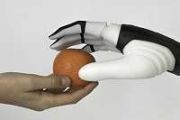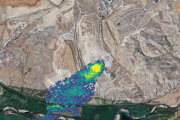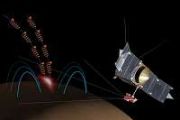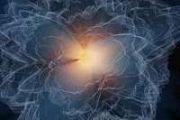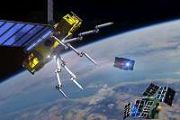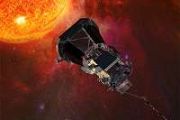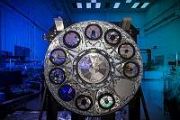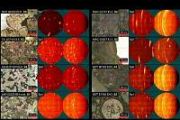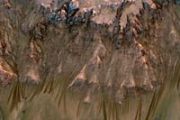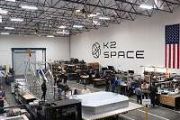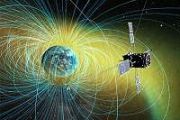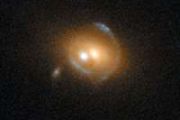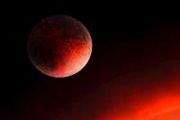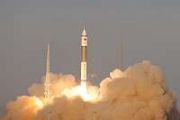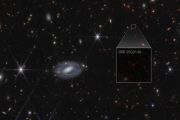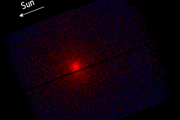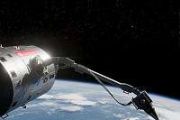
Copernical Team
Perseverance rover captures sound of Ingenuity flying on Mars
 NASA's Perseverance rover has for the first time captured the low-pitched whirring of the Ingenuity helicopter's blades as it flies through the rarefied Martian atmosphere.
The space agency on Friday released new footage shot by the six-wheeled robot of its rotorcraft companion making its fourth flight on April 30 - this time accompanied by an audio track.
The nearly three-minute-long v
NASA's Perseverance rover has for the first time captured the low-pitched whirring of the Ingenuity helicopter's blades as it flies through the rarefied Martian atmosphere.
The space agency on Friday released new footage shot by the six-wheeled robot of its rotorcraft companion making its fourth flight on April 30 - this time accompanied by an audio track.
The nearly three-minute-long v Air Force announces successful simulated hypersonic 'kill chain' test
 A B-52 bomber conducted a successful test of the simulated hypersonic kill chain, using a hypersonic weapon to neutralize a target, the U.S. Air Force said.
The test was a "successful simulated hypersonic kill chain employment from sensor to shooter and back," during the Northern Edge 21 exercises in Alaska, an Air Force statement said on Thursday.
As the B-52 traveled from Barks
A B-52 bomber conducted a successful test of the simulated hypersonic kill chain, using a hypersonic weapon to neutralize a target, the U.S. Air Force said.
The test was a "successful simulated hypersonic kill chain employment from sensor to shooter and back," during the Northern Edge 21 exercises in Alaska, an Air Force statement said on Thursday.
As the B-52 traveled from Barks International cutting-edge SWOT satellite to survey the world's water
 How much water sloshes around in Earth's lakes, rivers, and oceans? And how does that figure change over time? The upcoming Surface Water and Ocean Topography (SWOT) mission plans to find out. Targeting a late-2022 launch date, this SUV-size satellite will measure the height of Earth's water. SWOT will help researchers understand and track the volume and location of water - a finite resource - a
How much water sloshes around in Earth's lakes, rivers, and oceans? And how does that figure change over time? The upcoming Surface Water and Ocean Topography (SWOT) mission plans to find out. Targeting a late-2022 launch date, this SUV-size satellite will measure the height of Earth's water. SWOT will help researchers understand and track the volume and location of water - a finite resource - a US DoD close to finalizing recommendations for Space Force National Guard
 The 2020 National Defense Authorization Act (NDAA) called on the US Department of Defense to provide the US Congress with recommendations for a potential Space Force Reserve element. Presently, members of the National Guard are conducting space missions in seven US states and the territory of Guam.
Gen. Daniel Hokanson, chief of the US National Guard Bureau, revealed on Tuesday that he bel
The 2020 National Defense Authorization Act (NDAA) called on the US Department of Defense to provide the US Congress with recommendations for a potential Space Force Reserve element. Presently, members of the National Guard are conducting space missions in seven US states and the territory of Guam.
Gen. Daniel Hokanson, chief of the US National Guard Bureau, revealed on Tuesday that he bel Protests over SpaceX contract put timetable for lunar return in limbo
 Two space companies that are protesting NASA's $2.9 billion lunar contract award to SpaceX allege the deal would make future moon landings more risky, while the claims leave the timetable for a crewed mission in limbo.
The companies that are protesting the award, Jeff Bezos' Blue Origin and space tech firm Dynetics, have filed formal complaints with the Government Accountability Office,
Two space companies that are protesting NASA's $2.9 billion lunar contract award to SpaceX allege the deal would make future moon landings more risky, while the claims leave the timetable for a crewed mission in limbo.
The companies that are protesting the award, Jeff Bezos' Blue Origin and space tech firm Dynetics, have filed formal complaints with the Government Accountability Office, SpaceX to launch lunar mission paid with cryptocurrency Dogecoin
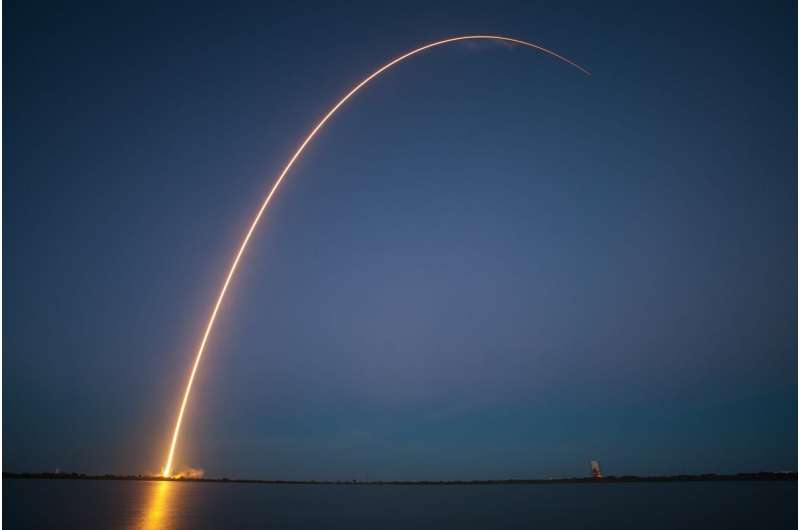
SpaceX will launch a satellite to the Moon next year funded entirely with the cryptocurrency Dogecoin, Canadian company Geometric Energy Corporation, which will lead the lunar mission, announced Sunday.
The satellite, dubbed DOGE-1, will be launched aboard a SpaceX Falcon 9 rocket in the first quarter of 2022, the Calgary-based company said in a statement.
The cubic satellite, weighing 88 pounds (40 kilograms), will aim to obtain "lunar-spatial intelligence from sensors and cameras on-board," according to the statement.
The "DOGE-1 Mission to the Moon" will be "the first-ever commercial lunar payload in history paid entirely with" Dogecoin, Geometric Energy Corporation said, without specifying how much the project cost.
"We're excited to launch DOGE-1 to the Moon!" Tom Ochinero, SpaceX vice president of commercial sales, said in the statement.
"This mission will demonstrate the application of cryptocurrency beyond Earth orbit and set the foundation for interplanetary commerce."
The announcement comes the day after SpaceX founder Elon Musk hosted the live sketch comedy show "Saturday Night Live" (SNL), during which he praised Dogecoin, originally created as a joke but legitimized through the eccentric tech entrepreneur's tweets.
Installing Juice at ESTEC
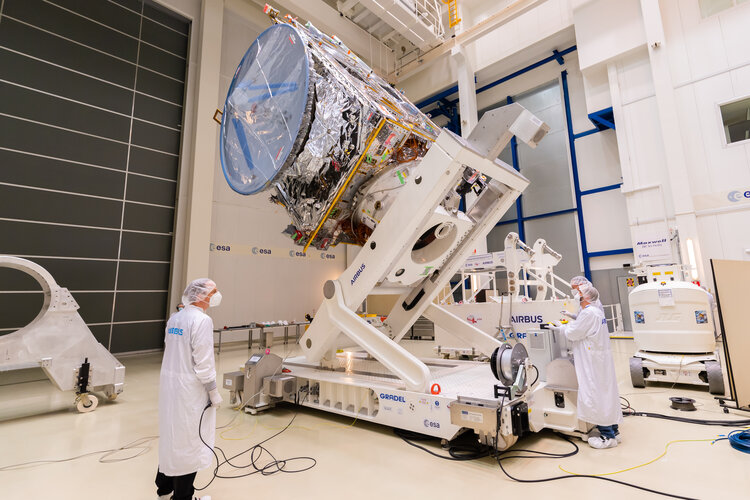 Image:
Installing Juice at ESTEC
Image:
Installing Juice at ESTEC Large Chinese rocket segment disintegrates over Indian Ocean
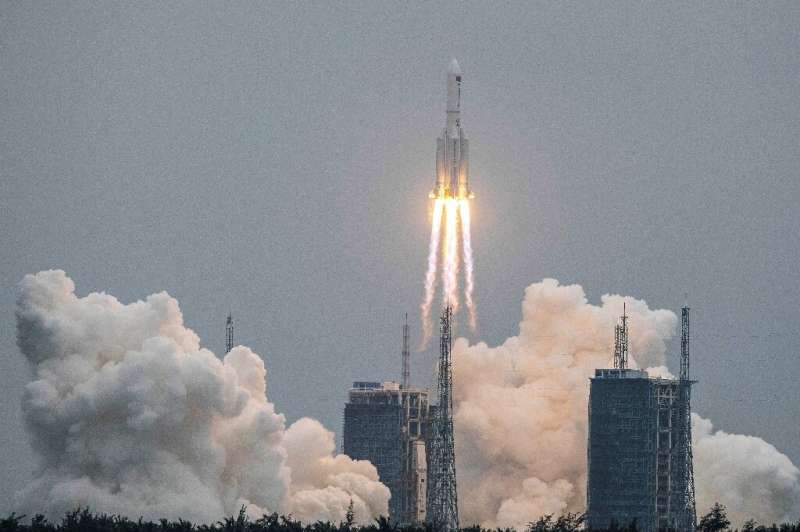
A large segment of a Chinese rocket re-entered the Earth's atmosphere and disintegrated over the Indian Ocean on Sunday, the Chinese space agency said, following fevered speculation over where the 18-tonne object would come down.
Officials in Beijing had said there was little risk from the freefalling segment of the Long March-5B rocket, which had launched the first module of China's new space station into Earth orbit on April 29.
But the US space agency NASA and some experts said China had behaved irresponsibly, as an uncontrolled re-entry of such a large object risked damage and casualties.
"After monitoring and analysis, at 10:24 (0224 GMT) on May 9, 2021, the last-stage wreckage of the Long March 5B Yao-2 launch vehicle has re-entered the atmosphere," the China Manned Space Engineering Office said in a statement, providing coordinates for a point in the Indian Ocean near the Maldives.
String of satellites baffles residents, bugs astronomers
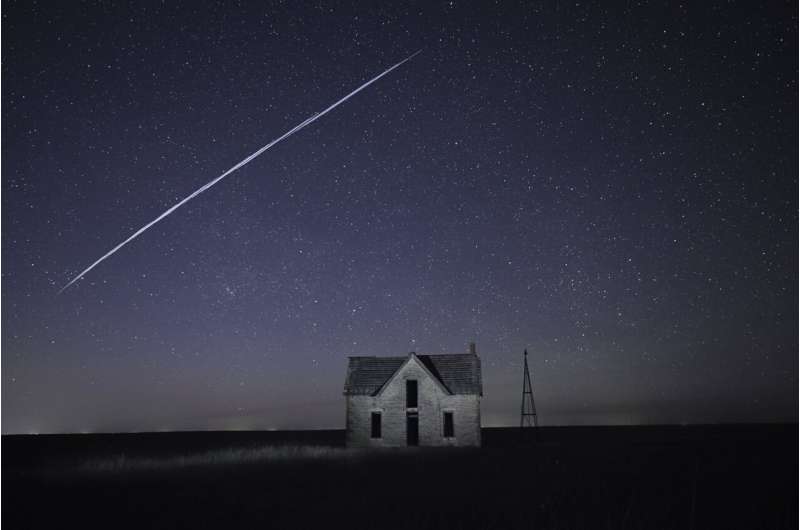
A string of lights that lobbed across the night sky in parts of the U.S. on Wednesday, Thursday and Friday had some people wondering if a fleet of UFOs was coming, but it had others— mostly amateur stargazers and professional astronomers— lamenting the industrialization of space.
AP Interview: NASA chief big on climate, hedges on moon date






